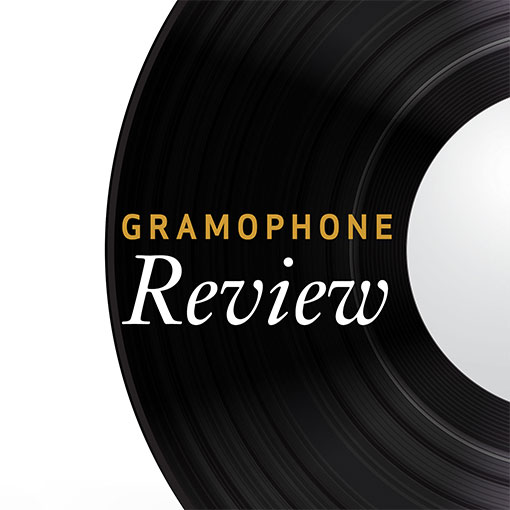Mozart Symphonies, Vol. 4
View record and artist detailsRecord and Artist Details
Composer or Director: Wolfgang Amadeus Mozart
Label: Florilegium
Magazine Review Date: 12/1987
Media Format: CD or Download
Media Runtime: 171
Mastering:
ADD
Catalogue Number: 417 841-2OH3

Tracks:
| Composition | Artist Credit |
|---|---|
| Symphony No. 25 |
Wolfgang Amadeus Mozart, Composer
Academy of Ancient Music Christopher Hogwood, Harpsichord Jaap Schröder, Violin Wolfgang Amadeus Mozart, Composer |
| Symphony No. 29 |
Wolfgang Amadeus Mozart, Composer
Academy of Ancient Music Christopher Hogwood, Harpsichord Jaap Schröder, Violin Wolfgang Amadeus Mozart, Composer |
| Symphony No. 30 |
Wolfgang Amadeus Mozart, Composer
Academy of Ancient Music Christopher Hogwood, Harpsichord Jaap Schröder, Violin Wolfgang Amadeus Mozart, Composer |
| Serenade No. 4 |
Wolfgang Amadeus Mozart, Composer
Academy of Ancient Music Christopher Hogwood, Harpsichord Jaap Schröder, Violin Wolfgang Amadeus Mozart, Composer |
| Symphony No. 28 |
Wolfgang Amadeus Mozart, Composer
Academy of Ancient Music Christopher Hogwood, Harpsichord Jaap Schröder, Violin Wolfgang Amadeus Mozart, Composer |
| Symphony (No. 51) |
Wolfgang Amadeus Mozart, Composer
Academy of Ancient Music Christopher Hogwood, Harpsichord Jaap Schröder, Violin Wolfgang Amadeus Mozart, Composer |
| Serenade No. 5 |
Wolfgang Amadeus Mozart, Composer
Academy of Ancient Music Christopher Hogwood, Harpsichord Jaap Schröder, Violin Wolfgang Amadeus Mozart, Composer |
Author: John Duarte
The transfer of the AAM's 'milestone' recordings of Mozart's symphonies (within and without 'the 41') to CD continues. With this volume we begin on the oft-savoured 'meat course', the works that are known by more than their Kochel numbers and which consequently offer the opportunity for comparison between these and earlier, conventional performances of Nos. 25, 28, 29 and 30, some of which are available also on CD. The 'unnumbered' symphonies, K203 and K204, derived from serenades, are no briefer than the others (over 25 minutes each) but K121, extracted from his comic opera La finta giardiniera, is a short and sweet seven minutes—no minuet; all are of more then archival interest. The use of 'period' string instruments gives remarkable clarity, without loss of weight of sound when it is called for, and their sharper-edged tonal teeth bite incisively on accents and make the shaping of phrases more vivid. In his original review SS sang the similar praises of the wind instruments, though my ears tell me that the bassoon in the ''pretty well tuned'' wind band in the Trio of the Minuet of No. 25 lurks below the pitch of the others.
The pros and cons of these performances were expounded in SS's review and need not be repeated here. The rather speedy and straight-faced delivery of the slow movements, evident also in the previous volume (CD 417 140-2oh2, 2/87), asks questions: can it be that the performers are insensitive to them? (Given the distinguished personnel, the answer must be 'no'.) Can this be a consequence of a conductorless performance, the absence of a central, personal focus of emotion? (Surely they discuss such things and make collective decisions.) Or was it different when it was Mozart who sat at the keyboard? Whatever the answer, these volumes are uniquely valuable in telling us how the music probably sounded to Mozart, rather than as it later came to sound to us—and still most often does. The clarity and presence of the CD sound could hardly be better; just one more good reason to invest in these recordings.'
The pros and cons of these performances were expounded in SS's review and need not be repeated here. The rather speedy and straight-faced delivery of the slow movements, evident also in the previous volume (CD 417 140-2oh2, 2/87), asks questions: can it be that the performers are insensitive to them? (Given the distinguished personnel, the answer must be 'no'.) Can this be a consequence of a conductorless performance, the absence of a central, personal focus of emotion? (Surely they discuss such things and make collective decisions.) Or was it different when it was Mozart who sat at the keyboard? Whatever the answer, these volumes are uniquely valuable in telling us how the music probably sounded to Mozart, rather than as it later came to sound to us—and still most often does. The clarity and presence of the CD sound could hardly be better; just one more good reason to invest in these recordings.'
Discover the world's largest classical music catalogue with Presto Music.

Gramophone Digital Club
- Digital Edition
- Digital Archive
- Reviews Database
- Full website access
From £8.75 / month
Subscribe
Gramophone Full Club
- Print Edition
- Digital Edition
- Digital Archive
- Reviews Database
- Full website access
From £11.00 / month
Subscribe
If you are a library, university or other organisation that would be interested in an institutional subscription to Gramophone please click here for further information.





